The rogue program called “PC App Store” has been around for a while, several years in fact. It’s not damaging and doesn’t try to steal your data, but it still poses an indirect risk to your system security and virtual privacy by running rogue processes without your permission.
It can also be responsible for the change of your browser’s search engine to DSR Search, so if you are dealing with that too, visit our article on the topic to learn how to fix your browser.
For these reasons, I regard this program as malware and recommend removing it as soon as you notice its presence.
Unlike other forms of malware, this PC App Store does appear to have some actual functionality – it attaches an app store tab to your Start Menu, from where you can download and install various apps on your PC. Not too bad at first sight, but this app has secondary functions and that’s where the issues begin.
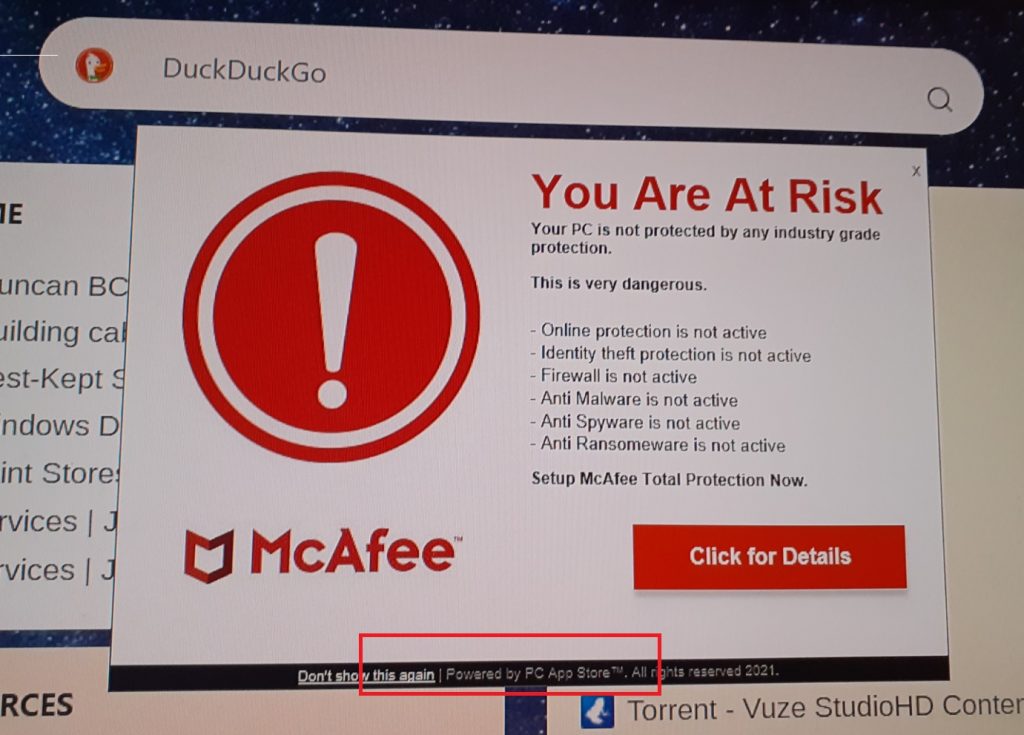
PC App Store relentlessly spams you with invasive pop-up ads that are difficult to stop and that might not always be safe. But the biggest problem I have with this software is how it shows a misleading McAfee pop-up that tells you the system is at risk.
This pop-up is a blatant scare tactic from the PC App Store devs and you shouldn’t trust it or click it. Instead, you should just remove the rogue app.
Pc App Store Virus Removal
What really frustrates me about this rogue software is how it presents itself as a legitimate app only to then put every roadblock possible in your path to keep you from uninstalling it. It took me hours of research to figure out a working way to get rid of everything this malware installs on your PC. But now I finally got it, and I invite you to use this next guide to free yourself from PC App Store.
First, I suggest you try to get rid of this malware the easy way:
- Open the Start Menu, type Apps & Features > press Enter.
- Look for anything named Pc App/Pc App Store/PCapp. Also look for items called “nwjs“, “nw_store“, “Fast!”, or “Get Fast!” – those are also related to the malware and you might find them in your PC.
- Try to uninstall all suspicious software that you find.
- Once the uninstallation completes, restart your PC and see if you are still noticing sings of the malware’s presence.
Video walkthrough for this step:
This quick method will rarely do the job, but it’s worth the try. If the malware is still there, proceed to the detailed steps below.
SUMMARY:
Before you begin the guide, know that it can take upwards of an hour, so arm yourself with patience. Also, inexperienced users might find some of the steps confusing.
If don’t have the time or experience to see this guide through, I recommend using SpyHunter 5 instead. It’s a powerful anti-malware tool that can find and delete threats like this one while also saving you a ton of time. You can find SpyHunter linked on this page.
How to Remove the PC App Store Adware
There are two things you must do to prepare for the removal:
- Install LockHunter – it’s a totally free tool that unlocks files that you can’t delete normally. You are likely to encounter such files when trying to remove PC App Store.
- Search for File Options in the Start Menu, open View, enable Show Hidden Files and Folders, and click Apply > OK. Some of the malware files could be hidden and you need to be able to see them to delete them.
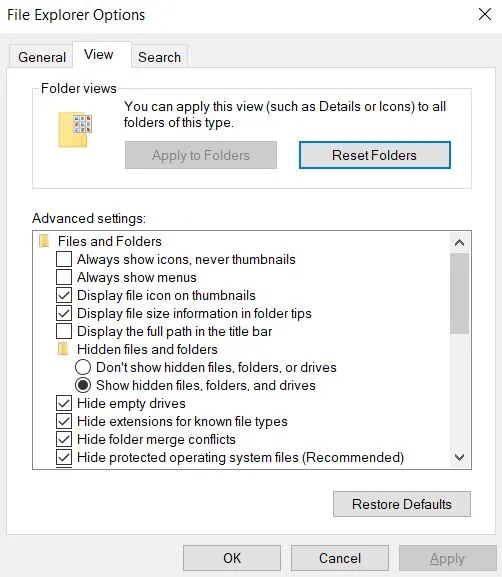
How to Show Hidden Files and Folders
Now you are ready for the removal.
How to Uninstall PC App Store From the Task Manager
You must first get rid of the rogue processes this malware runs. Open the Task Manager by pressing Ctrl + Shift + Esc and click More Details if the list isn’t expanded.
Search the list of processes for any of the following:
- Pc App/Pc App Store
- PCapp.exe
- fa_rss
- NW_store.exe
- BazBesSAS
- nwjs
- nw_store
If you see one or more of these processes, do the following for each one:
- Right-click the process, and select Open File Location.
- Return to the Task Manager window without closing the newly opened folder, then select the rogue process, click End Task, and confirm that action.
- Go back to the folder, then go up one level to the previous folder (the one that contains the malware folder). You can do this by clicking the upwards arrow in the top-left in front of the folder path.
- Now delete the entire malware folder. If it refuses to get deleted because some of its files are still in use, make sure you’ve got LockHunter installed, then right-click the folder and select the “What’s locking this folder?” option.
- In the next window, you’ll get the option to delete it, so click that and the folder will be gone.
Repeat these steps for all other rogue processes found in the Task Manager.
Important!
- If you are not allowed to delete any of the files/folders because of restricted access, do this:
- Right-click the folder, go to Properties, and open the Security tab.
- Click Advanced, then click Change, and type “everyone” in the text field.
- Select Check Names, then OK, and enable the two Replace options in the previous window.
- Click Apply and then OK and now you’ll be able to delete that folder.
Video walkthrough for this step:
How to Delete Persistent Files with Lock Hunter
How to Delete PC App Store Virus Files
There are almost certainly more rogue files and folders left on your PC and you’ll need to find them manually in order to delete them.
Here are the locations where you must search for them:
- C:\Users\%USERNAME% – look for folders named PC App or nwjs, or any of the other names I listed above (the process names).
- C:\Users\%USERNAME%\AppData\Roaming\fa – delete the “fa” folder (could also be “fa_rss“).
- C:\Users\administrator\a9c2w\ – delete the “a9c2w” folder
- C:\ProgramData\Microsoft\Windows\Start Menu\Programs – delete anything that looks linked to the malware.

Also, in each of these locations, if you notice a file or folder with the process names I listed in the previous section, delete them too.
Stop the PC App Store McAfee Pop-up
To make sure that the PC App Store pop-up doesn’t appear again, you must also check your startup items and scheduled tasks. The malware has likely made changes there that could allow it keep spamming you even after you’ve seemingly removed it, so here’s what you need to do.
Type Startup in the Start Menu and hit Enter.
Then look through the list and if you see any of the names I already mentioned (PC App Store, PCapp, NW_store.exe, etc.), disable them and close the window.
Next, use the Start Menu again to search for Task Scheduler and open it.
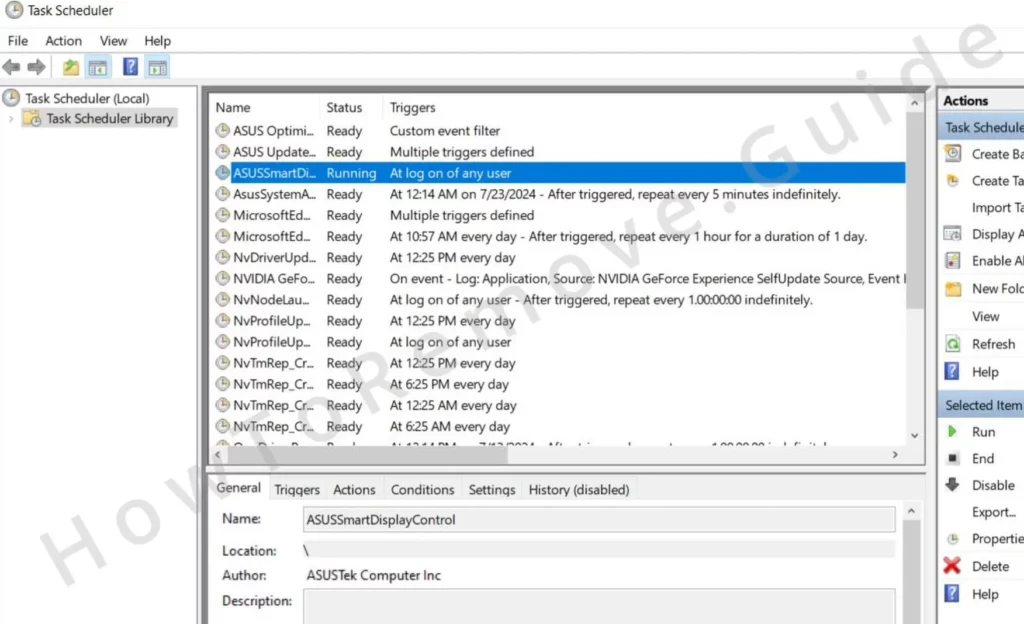
Click Task Scheduler Library in the top-left and begin checking each of the listed tasks. Double-click them and open their Actions tabs to see what they run.
If any given task is set to open a suspicious page, download something, or run a suspicious executable or script, you must delete it.
Make sure to explore all of the listed tasks in this way or you could miss something and allow PC App Store to return.
Video walkthrough for this step:
Get Rid of PC App Store McAfee Popups Through the Registry Editor
Lastly, you need to make sure that any entries created by this malware in the system registry are deleted. Here’s how to do it:
Type “regedit” in the Start Menu, right-click the Registry Editor > Run as Administrator.
Press Ctrl + F and search for “pcapp“. If the search finds anything, delete the respective key (folder) in the left panel. Then search again, delete the next found item, and keep doing that until all relevant keys are removed.
Then search for each of the following and delete any relevant items:
- fa_rss
- NW_store.exe
- BazBesSAS
- nwjs
- nw_store
In case you are unable to delete a given key due to restricted access, do this:
Right-click the blocked key > Permissions > Advanced > Change.
Type “everyone” in the text field, then click Check Names, then OK.
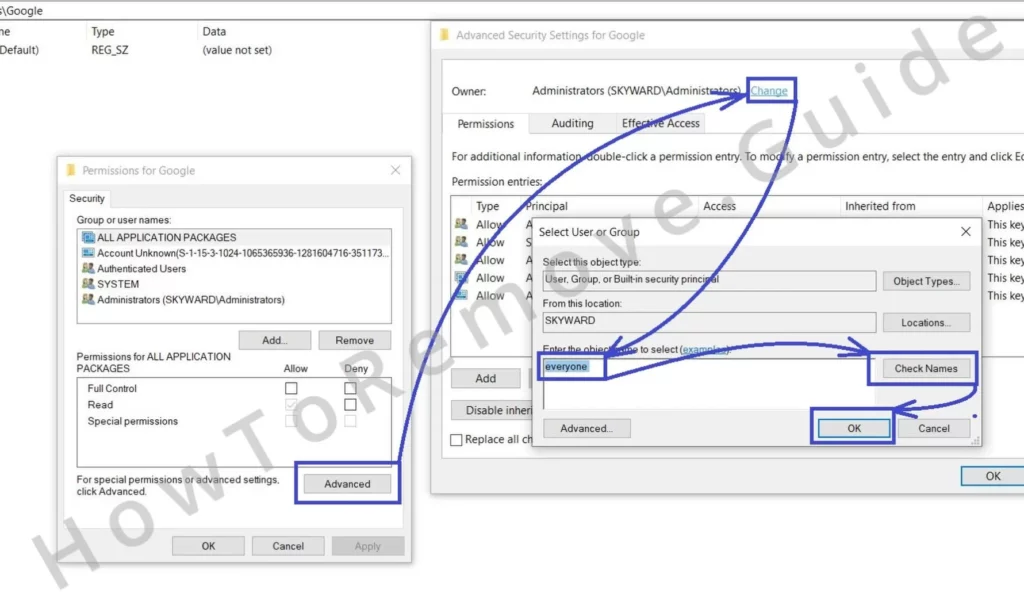
In the previous window, enable the two options that start with “Replace“.
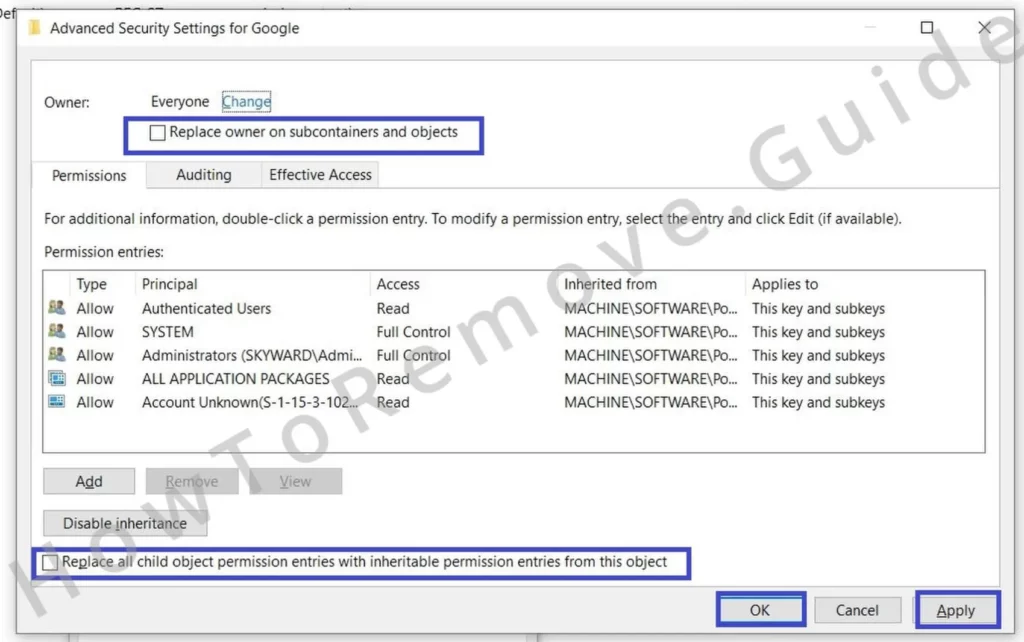
Click Apply and OK and now you’ll be able to delete that key.
This is the final step for this guide. After you complete it, I am confident that you’ll have fully removed the rogue PC App Store software.
Video walkthrough for this step:

Leave a Reply